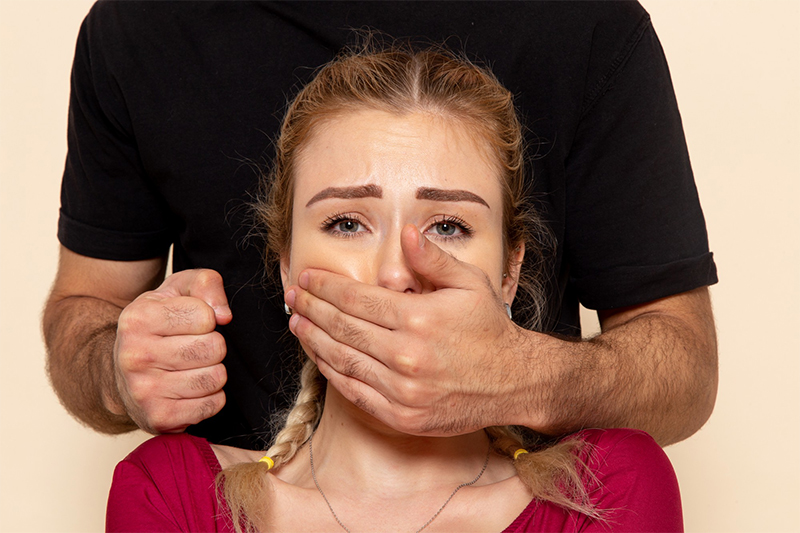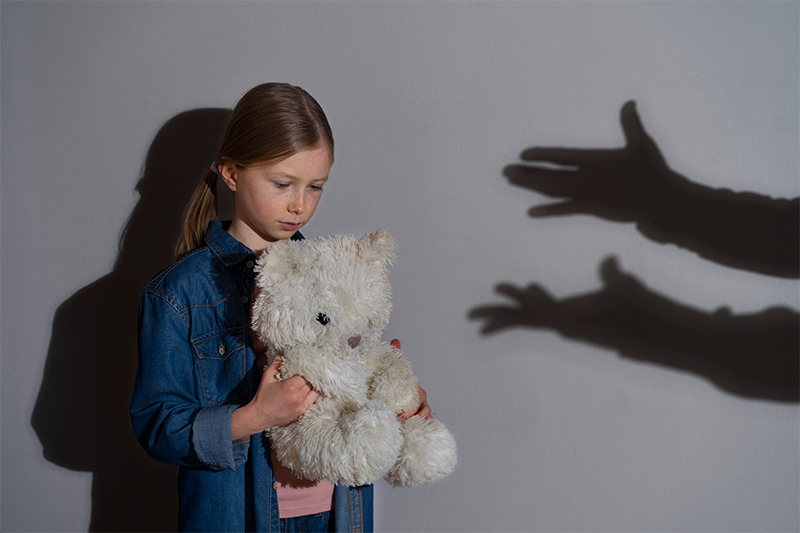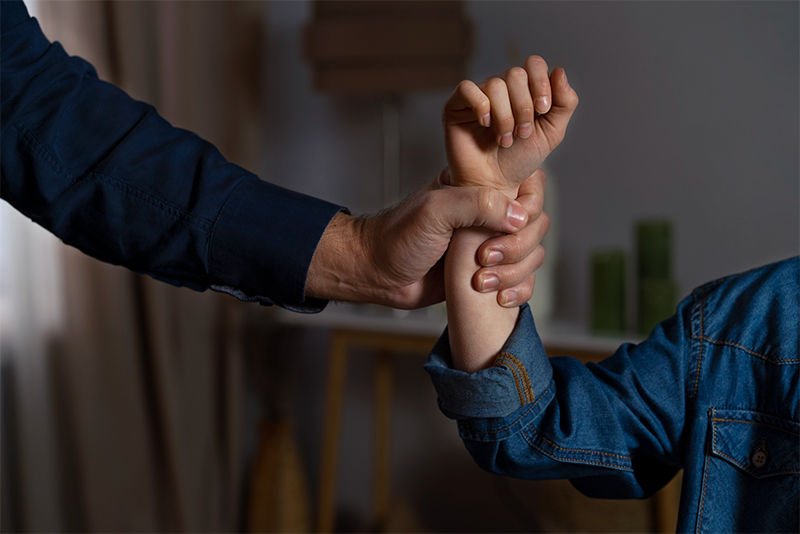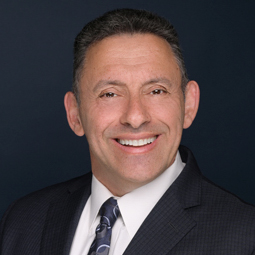Most individuals are familiar with someone who has been impacted by sexual abuse. Here are some surprising statistics that shed light on this dark subject:
1. Sexual violence is a significant public health and human rights concern that impacts over 40% of women in the United States throughout their lives.
2. Approximately 10% of rape victims are male.
3. In 2019, there were 652,676 reported cases of rape involving women.
4. Over 80% of sexual assault victims in college do not report the incident to the police.
5. Out of the sexual abuse cases reported to law enforcement, 93% of juvenile victims had prior acquaintance with the perpetrator.
6. In rigorous research, the rates of false reports consistently have very low percentages, typically ranging from 2% to 10%.
7. According to NPR, individuals with disabilities experience sexual assaults at rates more than seven times higher than those without disabilities.
8. There was a 13 percent increase in military-related sexual assaults in 2021 compared to 2020, totaling over 8,500 cases. Over 35,000 troops experienced unwanted sexual contact.
9. Out of every 1000 rapes in the US, 995 perpetrators will avoid punishment.
10. On average, an American is sexually assaulted every 68 seconds.
1. Sexual violence is a prevalent issue in the United States, affecting over 40% of women throughout their lives.
Sexual violence is a distressing and widespread problem that continues to plague the United States, with alarming statistics revealing its impact on the lives of women. Startlingly, over 40% of women in the country fall victim to sexual abuse at some point in their lives. [1]
These figures shed light on the need to address this issue as a matter of public health and human rights.

2. 1 out of every 10 victims of rape are male.
Shockingly, research indicates that approximately 1 in every 10 victims of rape is male, underscoring the urgent need to address this often overlooked aspect of sexual abuse. [2]
The fact that a significant proportion of rape survivors are male challenges traditional perceptions surrounding sexual violence. Men, just like women, can fall victim to sexual abuse.
It is only a misconception that sexual violence is solely a women’s issue, and a more inclusive conversation around this topic is needed.
3. In 2019, a total of 652,676 cases of rape involving women were reported.
In 2019, the United States witnessed an alarming number of reported cases of rape involving women. The data revealed a staggering total of 652,676 incidents, further highlighting the urgent need to address and combat sexual violence in our society. [3]
Each case represents an individual whose life has been forever altered by an act of violence and violation. It serves as a reminder that sexual assault continues to pose a significant threat to the safety, well-being, and personal autonomy of women across the country.
Behind every statistic lies a survivor who has endured immense physical, emotional, and psychological trauma. The aftermath of rape can have profound and lasting effects, including anxiety, depression, post-traumatic stress disorder (PTSD), and a myriad of other psychological and emotional challenges.

4. Most sexual assault victims on college campuses do not report their attack.
Disturbingly, a significant proportion of rapes and sexual assaults go unreported to the police. It is estimated that approximately over 80% of these heinous crimes that occur on college campuses are not brought to the attention of law enforcement agencies, shedding light on a pervasive issue of underreporting. [4]
The reasons behind this alarming trend of non-reporting are multifaceted and often complex. Victims may fear retaliation, social stigma, or blame, which can lead to a reluctance to disclose their experiences.
Survivors may also perceive a lack of trust or faith in the criminal justice system, questioning whether it will deliver justice or adequately support them.
By remaining silent, survivors may be denied access to support services, medical care, and justice. It perpetuates a culture where perpetrators are not held accountable for their actions, potentially enabling them to continue harming others.
5. Most juvenile victims of sexual abuse knew their perpetrators beforehand.
Statistics reveal that in cases of reported sexual abuse to law enforcement, a staggering 93% of juvenile victims had a prior acquaintance with the perpetrator.
This finding sheds light on the dark reality that many victims of sexual abuse are violated by individuals they know and trust, further underscoring the importance of understanding the complexities and nuances surrounding this issue.
It challenges the common misconception that strangers are the primary perpetrators of such crimes. [5]

6. In extensive research, rates of false reports are consistently low, typically ranging from 2% to 10%.
Extensive research conducted on the subject reveals that rates of false reports in cases of sexual assault are consistently low, typically ranging from 2% to 10%. [6]
These findings challenge common misconceptions about false reporting and emphasize the importance of believing and supporting survivors who come forward with their experiences.
The prevailing notion that false reporting is prevalent has been debunked by numerous studies. These studies have consistently found that the overwhelming majority of sexual assault reports are genuine and based on the real experiences of survivors.
The focus, therefore, should be on encouraging a culture that believes in and supports survivors rather than perpetuating harmful skepticism.
The fear of not being believed or facing scrutiny often discourages survivors from reporting their experiences, leading to underreporting and a lack of accountability for perpetrators.

7. People with disabilities are seven times more likely to experience sexual assaults than those without disabilities.
The rates of sexual abuse for individuals with disabilities are over seven times higher, highlighting a deep disparity and the urgent need to address this issue. [7]
The reasons behind this alarming statistic are complex and multi-faceted. Often, individuals with disabilities may be more dependent on others for their care and support, making them susceptible to abuse by those in positions of power or trust.
Societal attitudes and misconceptions about disability can contribute to the increased risk. Prevalent stereotypes may lead to the objectification, dehumanization, and marginalization of individuals with disabilities, making them more susceptible to exploitation.
8. The Pentagon reported over 8,500 sexual assaults in 2021, a 13% increase from 2020. There were 36,000 active-duty troops who experienced unwanted sexual contact, compared to 20,000 in 2018.
The Pentagon’s recent data reveals a deeply concerning rise in reported sexual assaults within the military. In 2021 alone, there were over 8,500 reported cases, marking a 13 percent increase from the previous year. [8]
These figures shed light on an ongoing and pervasive issue that continues to impact the safety and well-being of service members.
A confidential survey conducted within the military estimated that approximately 36,000 active-duty troops experienced unwanted sexual contact in 2021, a significant increase from the estimated 20,000 incidents reported in 2018.
These statistics highlight the distressing prevalence of sexual assault within the military and the urgent need for comprehensive action.
Sexual assault within the military not only inflicts immediate harm on survivors but also has far-reaching consequences for unit cohesion, morale, and overall military readiness.
9. Out of every 1000 rapes in the US, 995 perpetrators will not face punishment.
Studies on unreported sexual assault statistics indicate that a significant number of perpetrators are likely to go unpunished. [9]
According to US rape statistics, a significant number of victims do not pursue legal action, resulting in perpetrators avoiding any consequences.

10. There is a sexual assault on an American every 68 seconds.
Based on recent research, sexual assaults happen in America every 68 seconds on average, which is a worrisome statistic. [10]

Every minute, someone, somewhere in this country, is being assaulted. This is especially concerning when a person is under the authority of the one committing the assault. We encourage all of the abused to seek justice through the legal system and find satisfaction in preventing this crime from affecting others.
If you were the victim of foster care sexual abuse Portland or the State of Oregon, contact the experienced Portland foster care abuse attorneys at Goldberg & Loren.
Sources:
[1] Sexual Assault of Women – PubMed. (2021, February 1). PubMed. https://pubmed.ncbi.nlm.nih.gov/33507052/
[2] Statistics | website. (n.d.). Website. https://www.savacenterga.org/statistics
[3] Moreano, R. (2022, March 21). Honoring and Supporting Women: An Open Letter to Men from One of Your Own – by Roger Moreano – MSM Global Consulting. MSM Global Consulting. https://msmglobalconsulting.com/honoring-and-supporting-women-an-open-letter-to-men-from-one-of-your-own-by-roger-moreano/
[4] Get Informed Statistics: Campus Sexual Violence. (n.d.). RAINN. Retrieved December 3, 2025, from https://rainn.org/facts-statistics-the-scope-of-the-problem/statistics-campus-sexual-violence/
[5] Perpetrators of Sexual Violence: Statistics | RAINN. (n.d.). Perpetrators of Sexual Violence: Statistics | RAINN. https://www.rainn.org/statistics/perpetrators-sexual-violence
[6] Publications_NSVRC_Overview_False-Reporting. (2012). National Sexual Violence Resource Center. Retrieved May 18, 2024, from https://www.nsvrc.org/sites/default/files/Publications_NSVRC_Overview_False-Reporting.pdf
[7] Shapiro, J. (2018, January 8). The Sexual Assault Epidemic No One Talks About. NPR. https://www.npr.org/2018/01/08/570224090/the-sexual-assault-epidemic-no-one-talks-about
[8] Horton, A. (2022, September 1). Sexual assault in military continues to rise despite efforts to reverse. Washington Post. https://www.washingtonpost.com/national-security/2022/09/01/sexual-assaults-military-increase/
[9] Cullen, J. (2019, March 25). 995 out of 1,000 rapes are unconvicted. American Nurse. https://www.myamericannurse.com/995-out-of-1000-rapes-are-unconvicted/
[10] Desk, N. (2019, June 4). Sexual Assaults Occur Every 68 Seconds in USA. Global Village Space. https://www.globalvillagespace.com/sexual-assaults-occur-every-68-seconds-in-usa/

